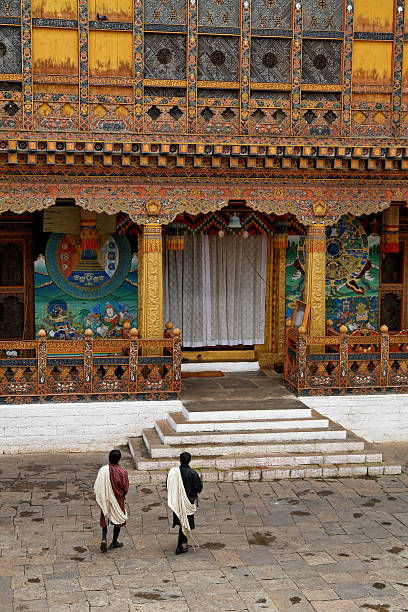Punakha is a district and town located in the western part of Bhutan. It served as the capital of Bhutan until 1955 and is known for its historical significance, stunning landscapes, and majestic dzongs (fortress-monasteries). Here are some key points about Punakha, Bhutan:
- Punakha Dzong: Punakha Dzong, also known as Pungtang Dechen Phodrang Dzong, is one of the most prominent attractions in Punakha. It is the second oldest and second largest dzong in Bhutan, and its strategic location at the confluence of the Pho Chhu (Male River) and Mo Chhu (Female River) adds to its beauty. The dzong showcases impressive architecture and houses sacred relics.
- Chimi Lhakhang: Located near Punakha, Chimi Lhakhang is a famous temple dedicated to the Divine Madman, Drukpa Kunley. It is known as the “Temple of Fertility” and is visited by couples seeking blessings for children. The temple is adorned with phallus symbols, and the surrounding countryside is picturesque.
- Suspension Bridge: Punakha is known for its suspension bridges, particularly the Punakha Suspension Bridge. It is one of the longest suspension bridges in Bhutan and offers breathtaking views of the Punakha Valley and the surrounding mountains. Crossing the bridge is an exhilarating experience.
- Khamsum Yulley Namgyal Chorten: Situated on a hill above Punakha Valley, this beautiful chorten (Buddhist stupa) offers panoramic views of the valley. It was built to ward off evil spirits and promote peace and stability in the region. The hike to the chorten takes you through rice fields and forests.
- Sangchhen Dorji Lhuendrup Lhakhang Nunnery: Located on a ridge overlooking the Punakha Valley, this nunnery is a peaceful place that offers a glimpse into the lives of Buddhist nuns. The nunnery also houses a large statue of Avalokiteshvara (Chenrezig) and provides panoramic views of the surrounding mountains.
- Punakha Tshechu: The Punakha Tshechu is an annual religious festival held in Punakha Dzong. It showcases colorful mask dances, traditional music, and cultural performances. It is a festive celebration that attracts both locals and tourists.
- Rice Fields and Rural Life: Punakha is known for its terraced rice fields, especially during the rice planting and harvesting seasons. The picturesque countryside offers opportunities for leisurely walks, bike rides, and interactions with the local farming communities.
Punakha is a beautiful destination that combines natural beauty, cultural heritage, and spiritual significance. It is often visited as part of the popular tourist circuit that includes Paro and Thimphu.


